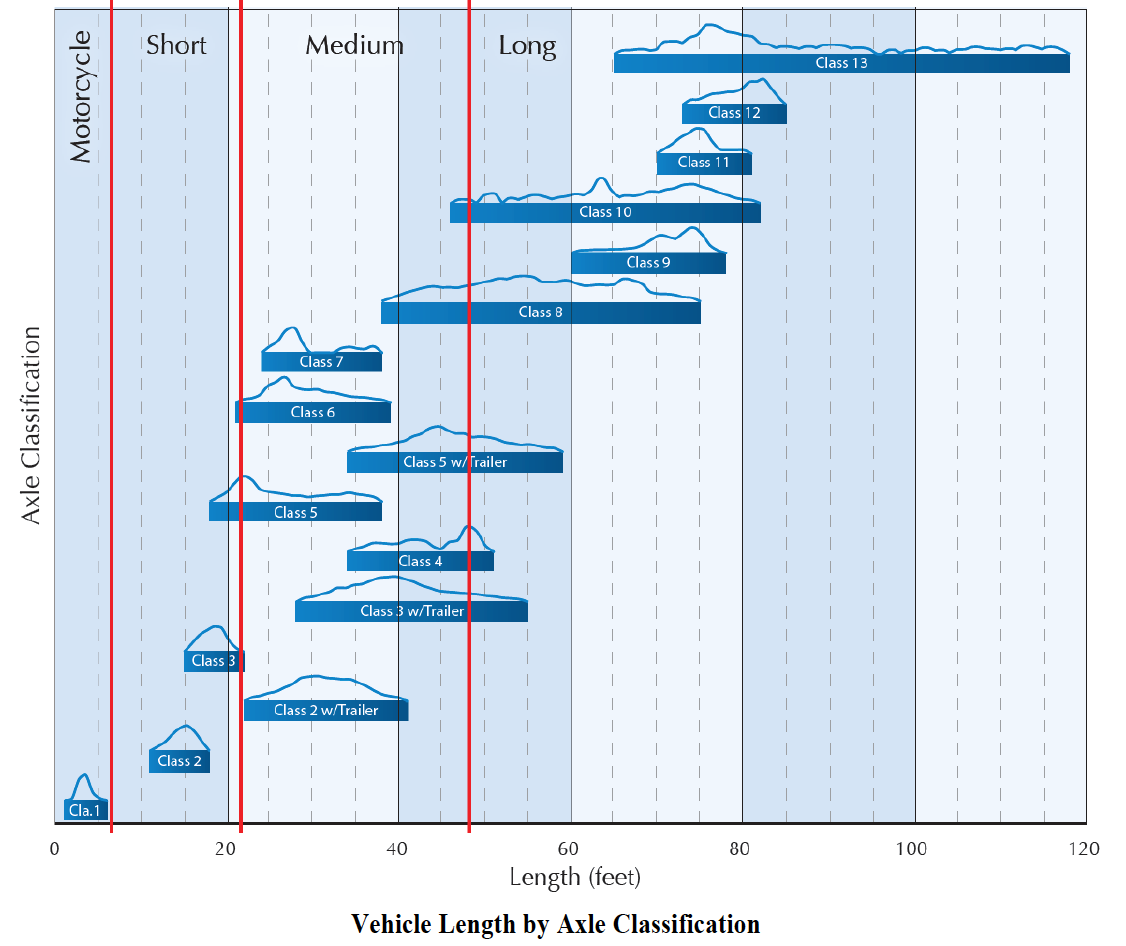 Loading...
Loading...
 Loading...
Loading...

This page provides plots of vehicle length or "freight" data. A primary purpose of collecting and using vehicle length data is to distinguish freight vehicle traffic from non-freight vehicle traffic. Thus while the data used for the plots on this page is technically called vehicle-length data, we have named this page as the "freight" page.
Data Availability Note: There have been periodic outages of the freight data feed in Fall 2017. In particular, there was an extended outage from Sep 30 - Oct 27.
Two plots are available on the page - the Standard view and Comparison view. These plots were designed to answer the following two tasks a user may want to accomplish.
Task 1: What percent of traffic at a location is freight vs. non-freight? (Standard view)
Task 2: How has the amount / percent of freight traffic at a location changed over time? (Comparison view)
A User Manual for the freight page as well as other related documents are available at the bottom of this page.
The figure below, from the pooled-fund study [1], provides an illustration of the association between vehicle length and vehicle class. The table below lists the class names and is taken from a MAG study [2], which also provides descriptions of the vehicle classes. The vertical red lines in Figure 1 show one potential set of length bins and how those length bins capture different vehicle classes. For example, the “short” bin in this figure will capture all Class 2 vehicles (Passenger Cars), most Class 3 vehicles (Other Two-Axle, Four-Tire Single Unit Vehicles), some Class 5 (Two-Axle, Six-Tire, Single-Unit Trucks) vehicles and a very few Class 6 (Three-Axle Single-Unit Trucks) vehicles.
| Class | Description |
|---|---|
| Class 1 | Motorcycle |
| Class 2 | Passenger Cars |
| Class 3 | Other Two-Axle, Four-Tire Single Unit Vehicles |
| Class 4 | Buses |
| Class 5 | Two-Axle, Six-Tire, Single-Unit Trucks |
| Class 6 | Three-Axle Single-Unit Trucks |
| Class 7 | Four or More Axle Single-Unit Trucks |
| Class 8 | Four or Fewer Axle Single-Trailer Trucks |
| Class 9 | Five-Axle Single-Trailer Trucks |
| Class 10 | Six or More Axle Single-Trailer Trucks |
| Class 11 | Five or fewer Axle Multi-Trailer Trucks |
| Class 12 | Six-Axle Multi-Trailer Trucks |
| Class 13 | Seven or More Axle Multi-trailer Trucks |
